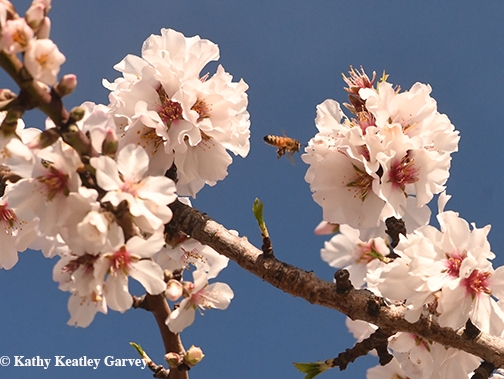
Take Benicia, Solano County. Its little hot spots near the Carquinez Strait--think trees growing near sun-warmed asphalt--yield early almond blooms, often as early as New Year's Day.
At the Matthew Turner Park in Benicia, today, honey bees buzzed around the almond blossoms, gathering pollen and nectar. But the honey bees were not alone.
Yellow-faced bumble bees, Bombus vosnesenskii, were foraging, too. It's always a treat to see honey bees in the almonds, but it's a double treat to see a bumble bee.
Pollination of California's almond acreage is as intense as it is huge. The 2016 almond acreage totaled 1.2 million acres--940,000 bearing and 300,000 acres non-bearing, according to a report issued in April 2017 by the California Department of Food and Agriculture, in cooperation with the National Agricultural Statistics Service of the U.S. Department of Agriculture. This year, California has more than a million acres of bearing almonds, and each acre requires two bee hives for pollination. The leading almond-producing counties? Kern, Fresno, Stanislaus, Merced and Madera.
Solano County, of course, doesn't make the list, but when you want to see the early almond blooms, it's the place to "bee."
Which reminds us of the research, Synergistic Effectgs of non-Apis Bees and Honey Bees for Pollination Services, published by an international team of scientists in the Jan. 10, 2013 edition of The Proceedings of the Royal Society B. The researchers, including pollination ecologist Neal Williams of UC Davis, found that honey bees are more effective at pollinating almonds when other species of bees are present.
When blue orchard bees and wild (non-managed) bees such as bumble bees, carpenter bees and sweat bees, are foraging in almonds with honey bees, the behavior of honey bees changes, resulting in more effective crop pollination, said lead author Claire Brittain, then of the Neal Williams lab. She earlier worked as a post-doctoral fellow at Leuphana University of Lüneburg, Germany.
“These findings highlight the importance of conserving pollinators and the natural habitats they rely on,” Brittain told us in a news release. “Not only can they play an important direct role in crop pollination, but we also show that they can improve the pollination service of honey bees in almonds.”
Agroecologist Alexandra-Maria Klein, now a professor at Leuphana University, served as the project lead while a postdoctoral fellow in the UC Berkeley lab of conservation biologist/professor Claire Kremen. In fact, Klein and Kremen initiated the project in 2008 and continued working on the project together in 2009 and 2010. Williams joined the team in 2010.
Native pollinator specialist Robbin Thorp, now a distinguished emeritus professor of entomology at UC Davis, identified 50 different species that the team found. They included bumble bees, small carpenter bees, sweat bees, digger bees, mining bees and blue orchard bees.
Take a look around you during the almond pollination season. The honey bees are not alone.
Attached Images:
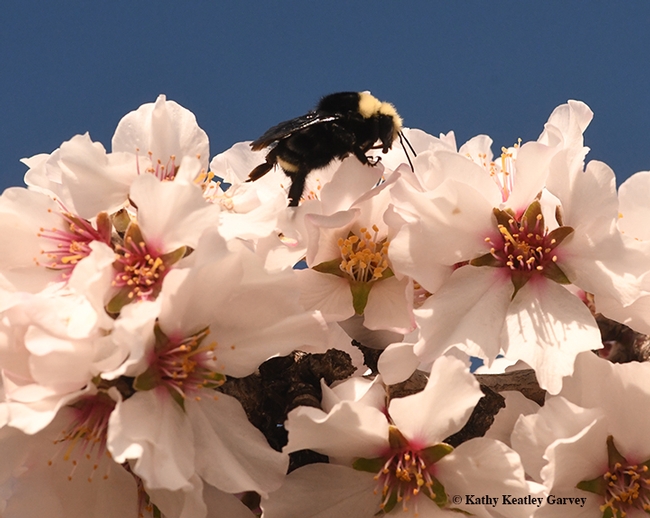
A yellow-faced bumble bees, Bombus vosnesenskii, forages on almond blossoms in Benicia, Calif., on Feb. 2. (Photo by Kathy Keatley Garvey)
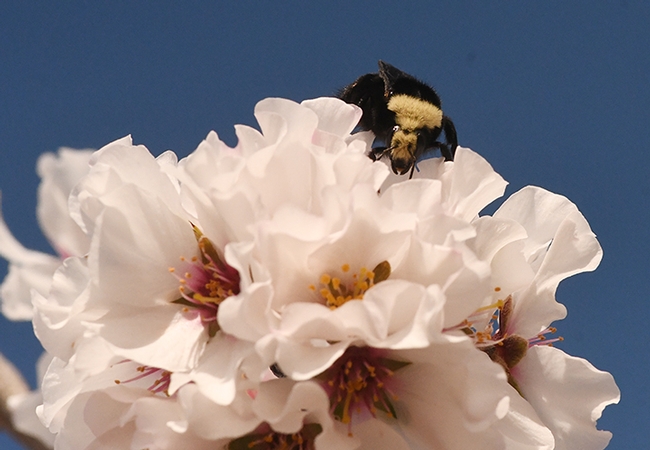
This yellow-faced bumble bees, Bombus vosnesenskii, peers up at the photographer. (Photo by Kathy Keatley Garvey)
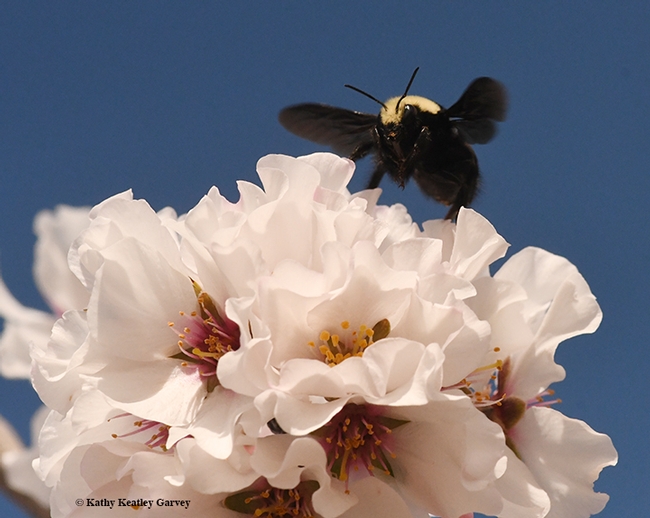
Flight of the bumble bee. This is a yellow-faced bumble bee, Bombus vosnesenskii. (Photo by Kathy Keatley Garvey)
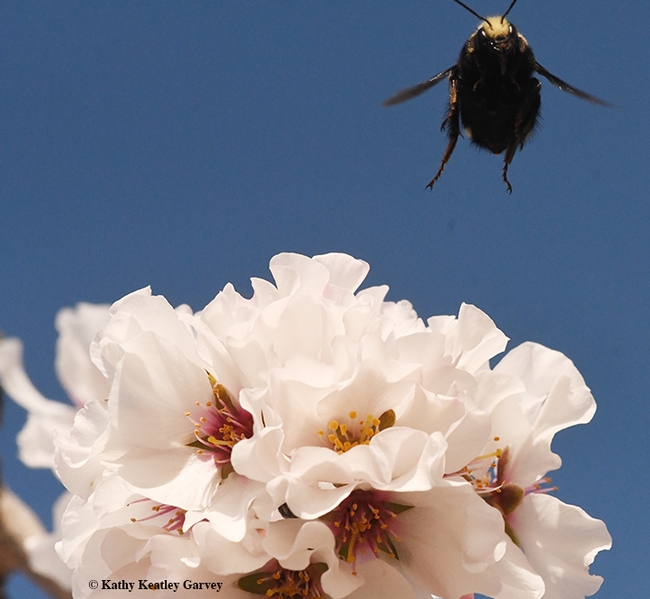
Coming right at you! Bombus vosnesenskii departs one blossom to find another. (Photo by Kathy Keatley Garvey)